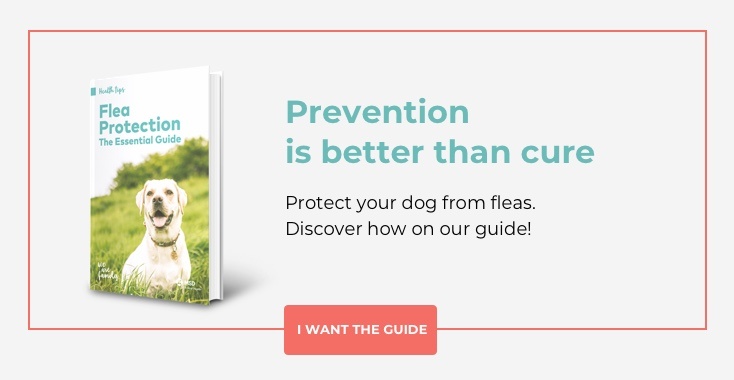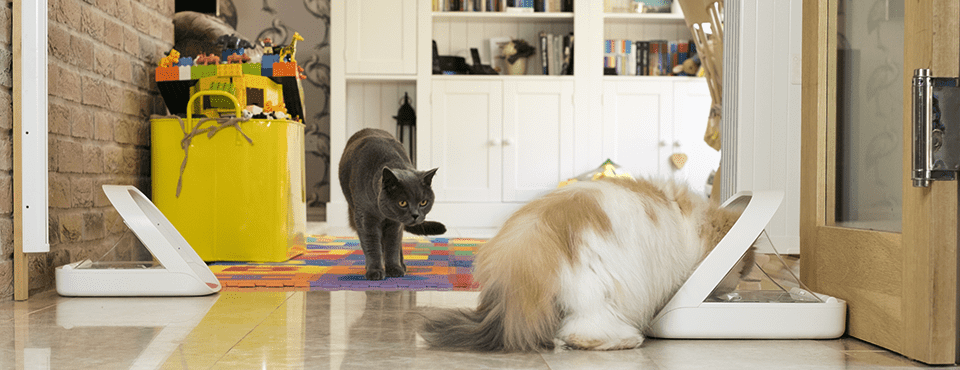How to prevent a dream from becoming a nightmare
HEALTH & PROTECTION
1 May, 2018
READ 4 minutes

Fleas are a common and dangerous risk to pets and can be a threat any day of the year. You may already know that fleas thrive in one of your pet’s favorite and most frequented playgrounds – your backyard. Fleas like moisture, shade and grass. However, even if your pets spends most of the time indoors, there is still a risk.
HOW DO PETS GET FLEAS?
Fleas are the most common external parasite found on pets. They can jump 30 cm vertically in the air and can leap onto your pet, making it easy for dogs and outdoor cats to bring fleas home.
A flea that jumps onto your pet will start feeding within a few minutes and may suck blood for up to 2 ½ hours. This flea may live on your dog or cat for almost 2 months!
Cats and dogs aren’t the only ones who suffer once a flea hitches a ride. Fleas can propel themselves onto humans, landing in our hair or bedding, carpets, and furniture cushions, and infesting our home.
Fleas reproduce abundantly and quickly, and just two fleas can quickly cause an infestation. The key to stopping fleas is to stop the flea life cycle.

WHY ARE FLEAS A DANGER TO OUR PETS?
Flea infestations quickly get out of control because fleas produce a lot of eggs. One female flea can produce 40 to 50 eggs per day for over 50 days, and over 2,000 eggs in her lifetime.
Some pets develop severe allergies to flea saliva, called flea allergy dermatitis, and develop signs such as itching, that may last long after the fleas have gone and may occur even when no fleas can be seen on your pet.
Fleas also transmit the tapeworm, Dipylidium caninum, to dogs, cats, and even humans.
Fleas can spread potentially fatal bacterial and viral diseases.
BREAKING THE FLEA LIFE CYCLE
The entire flea life cycle can take up to 8 weeks, while many flea treatments last only 4-5 weeks and offer limited protection. Therefore, using effective long-lasting flea treatments on a regular basis is the best way to make sure your pet stays protected against fleas and that your home is kept free of these pests.
Veterinary professional organisations recommend using an oral or spot-on flea product, such as Bravecto, regularly all year round to break the flea life cycle and keep your pet flea free.
Choosing the best treatment for you and your pet is a decision that is best made in a discussion with your veterinarian.

Prevention is always easier and much cheaper than treatment of disease, and there are flea and tick products available that reduce the risks from parasites. There are a number of products available with different lengths of efficacy, administration options and types of parasites covered. Choosing the correct approach for you and your pet is a decision that is best made through a discussion with your veterinarian. The right option can kill fleas throughout their life cycle and eliminate fleas in the house for good. A dream come true for pet and all.
RELATED POSTS
-

Learn about canine babesiosis, a tick-borne disease that affects dogs worldwide. Discover its symptoms, treatments, and how to prevent it.
-

Explore how diabetes impacts cats, its signs, risk factors, and effective management through medication and diet for a healthier feline life.
-

Diabetes affects an estimated 1 in 300 dogs, diabetes is more common in middle-aged and older dogs (4-14 years of age), it can be diagnosed in dogs of any age, including young dogs. Read more.
-

Ever wonder how your dog experiences the world? Why he or she sniffs everything, everywhere? Read more and find out








